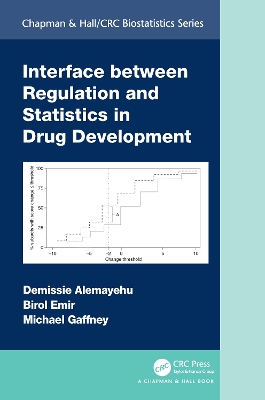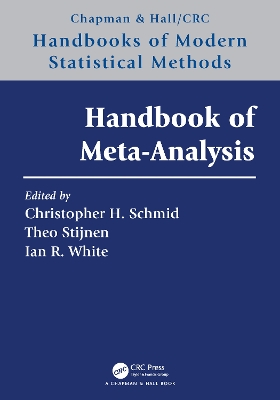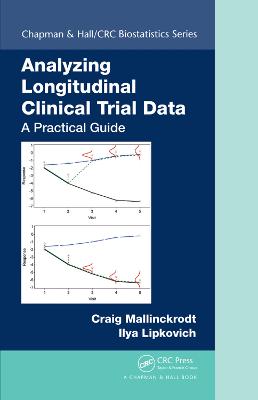Interface between Regulation and Statistics in Drug Development
 portes grátis
portes grátis
Interface between Regulation and Statistics in Drug Development
Alemayehu, Demissie; Gaffney, Michael; Emir, Birol
Taylor & Francis Ltd
08/2022
146
Mole
Inglês
9780367608286
15 a 20 dias
249
Descrição não disponível.
CONTENTS
List of figures xi
List of abbreviations xiii
Authors' Disclosure xvii
Acknowledgment xix
About the Authors xxi
Preface xxiii
Chapter 1 ? Fundamental Principles of Clinical Trials 1
1.1 INTRODUCTION 1
1.2 GENERAL STATISTICAL CONSIDERATIONS 5
1.2.1 Statistical Analysis Plan 5
1.2.2 Trial Design 6
1.2.3 Randomization and Blinding 7
1.2.4 Statistical Methodology 7
1.2.5 Reporting and Interpretation of Study Results 9
1.2.6 Data Quality and Software Validity 9
1.3 EVOLVING ROLES OF THE STATISTICIAN IN DRUG
DEVELOPMENT 9
1.4 POTENTIAL STATISTICAL ISSUES IN REGULATORY
REVIEW 14
1.4.1 Data Quality 14
1.4.2 Endpoint Definition 14
1.4.3 Design and Analysis Issues 15
1.4.4 Evaluation of Safety 16
1.4.5 Analysis Populations and Subgroups 16
1.4.6 Assessing Interpretation and Reliability of Results 17
1.5 CONCLUDING REMARKS 17
Chapter 2 ? Selected Statistical Topics of Regulatory
Importance 23
2.1 INTRODUCTION 23
2.2 MULTIPLICITY 24
2.2.1 Multiple Endpoints 24
2.2.2 Multiple Testing Over the Course of the Study 28
2.3 MISSING VALUES AND ESTIMANDS 30
2.3.1 General Considerations 30
2.3.2 Missingness Mechanisms 32
2.3.3 Approaches for Missing Data 34
2.3.4 Sensitivity Analyses 36
2.3.5 Estimands and Other Recent Regulatory
Developments 37
2.3.6 Concluding Remarks 40
2.4 NON- INFERIORITY STUDY 41
2.4.1 Efficacy Objective 41
2.4.2 Non- inferiority Hypothesis/ Non- inferiority
Margin 42
2.4.3. Determination of NIM 43
2.4.4 Example: FDA Guidance Document 43
2.4.5 Implications of Choice of NIM 44
2.4.6 Strength of a Non- inferiority Study 45
2.4.7 Synthesis Method for Non- inferiority 46
2.4.8. Summary Points 47
2.4.9 Non- inferiority Study with a Safety Objective 47
2.4.10 Summary Points 49
2.5 INNOVATIVE TRIAL DESIGNS 50
2.5.1 Adaptive Designs 50
2.5.2 Adaptive Randomization 50
2.5.3 Sample Size Reestimation 51
2.5.4 Sequential Designs 53
2.5.5 Adaptive Designs for Dose and Treatment
Selection 54
2.5.6 Adaptive Enrichment Designs 55
2.5.7 Master Protocols 55
2.5.7.1 Basket Trials 56
2.5.7.2 Umbrella Trials 58
2.5.7.3 Platform Trials 58
2.5.7.4 Regulatory and Operational
Considerations with Novel Trials 59
2.6 BAYESIAN ANALYSIS IN A REGULATORY
FRAMEWORK 60
2.6.1 Introduction 60
2.6.2 Potential Areas of Application 62
2.6.3 Regulatory Considerations 64
2.6.4 Challenges with Bayesian Statistics 66
2.6.5 Concluding Remarks 66
2.7 SURROGATE ENDPOINTS AND BIOMARKERS 66
2.7.1 Introduction 66
2.7.2 Statistical Considerations 68
2.7.3 Regulatory Considerations 71
2.7.4 Concluding Remarks 72
2.8 SUBGROUP ANALYSES 73
2.8.1 Introduction 73
2.8.2 Subgroup Analyses in the Traditional
Confirmatory Clinical- Trial Setting 73
2.8.3 Statistical Approaches 74
2.8.4 Reporting and Interpretation of
Subgroup Results 75
2.8.5 Subgroup Analyses in the Changing Clinical- Trial
and Regulatory Setting 76
2.8.6 Conclusion 77
2.9 BENEFIT- RISK ASSESSMENT 78
2.9.1 Introduction 78
2.9.2 Methodological Considerations in Benefit- Risk
Analysis 79
2.9.3 Regulatory Perspectives 81
2.9.4 Benefit- Risk in Health- Technology Assessment 84
2.9.5 Concluding Remarks 84
Chapter 3 ? Statistical Engagement in Regulatory
Interactions 97
3.1 INTRODUCTION 97
3.2 INTERNAL BEHAVIORS 98
3.3 DATA- MONITORING COMMITTEE 99
3.4 REGULATORY MEETINGS AND
ADVISORY COMMITTEE MEETINGS 101
3.5 STATISTICAL ROLE IN PROMOTIONAL
MATERIAL AND MEDICAL COMMUNICATION 106
3.6 CONCLUDING REMARKS 108
Chapter 4 ? Emerging Topics 111
4.1 THE USE OF RWE TO SUPPORT LICENSING AND
LABEL ENHANCEMENT 111
4.1.1 Introduction 111
4.1.2 Methodological and Operational Considerations 113
4.1.3 Current Regulatory Landscape 117
4.1.4 Concluding Remarks 119
4.2 PATIENT- REPORTED OUTCOMES IN REGULATORY
SETTINGS 120
4.2.1 Introduction 120
4.2.2 Development and Validation of PRO
Instruments 121
4.2.3 Statistical Considerations 123
4.2.4 Regulatory Considerations 125
4.2.5 Concluding Remarks 128
4.3 ARTIFICIAL INTELLIGENCE AND
MODERN ANALYTICS IN REGULATORY SETTINGS 129
4.3.1 Introduction 129
4.3.2 AI in Drug Development 131
4.3.3 Regulatory Experience with Machine
Learning and Artificial Intelligence 132
4.3.4 Concluding Remarks 133
Index 143
List of figures xi
List of abbreviations xiii
Authors' Disclosure xvii
Acknowledgment xix
About the Authors xxi
Preface xxiii
Chapter 1 ? Fundamental Principles of Clinical Trials 1
1.1 INTRODUCTION 1
1.2 GENERAL STATISTICAL CONSIDERATIONS 5
1.2.1 Statistical Analysis Plan 5
1.2.2 Trial Design 6
1.2.3 Randomization and Blinding 7
1.2.4 Statistical Methodology 7
1.2.5 Reporting and Interpretation of Study Results 9
1.2.6 Data Quality and Software Validity 9
1.3 EVOLVING ROLES OF THE STATISTICIAN IN DRUG
DEVELOPMENT 9
1.4 POTENTIAL STATISTICAL ISSUES IN REGULATORY
REVIEW 14
1.4.1 Data Quality 14
1.4.2 Endpoint Definition 14
1.4.3 Design and Analysis Issues 15
1.4.4 Evaluation of Safety 16
1.4.5 Analysis Populations and Subgroups 16
1.4.6 Assessing Interpretation and Reliability of Results 17
1.5 CONCLUDING REMARKS 17
Chapter 2 ? Selected Statistical Topics of Regulatory
Importance 23
2.1 INTRODUCTION 23
2.2 MULTIPLICITY 24
2.2.1 Multiple Endpoints 24
2.2.2 Multiple Testing Over the Course of the Study 28
2.3 MISSING VALUES AND ESTIMANDS 30
2.3.1 General Considerations 30
2.3.2 Missingness Mechanisms 32
2.3.3 Approaches for Missing Data 34
2.3.4 Sensitivity Analyses 36
2.3.5 Estimands and Other Recent Regulatory
Developments 37
2.3.6 Concluding Remarks 40
2.4 NON- INFERIORITY STUDY 41
2.4.1 Efficacy Objective 41
2.4.2 Non- inferiority Hypothesis/ Non- inferiority
Margin 42
2.4.3. Determination of NIM 43
2.4.4 Example: FDA Guidance Document 43
2.4.5 Implications of Choice of NIM 44
2.4.6 Strength of a Non- inferiority Study 45
2.4.7 Synthesis Method for Non- inferiority 46
2.4.8. Summary Points 47
2.4.9 Non- inferiority Study with a Safety Objective 47
2.4.10 Summary Points 49
2.5 INNOVATIVE TRIAL DESIGNS 50
2.5.1 Adaptive Designs 50
2.5.2 Adaptive Randomization 50
2.5.3 Sample Size Reestimation 51
2.5.4 Sequential Designs 53
2.5.5 Adaptive Designs for Dose and Treatment
Selection 54
2.5.6 Adaptive Enrichment Designs 55
2.5.7 Master Protocols 55
2.5.7.1 Basket Trials 56
2.5.7.2 Umbrella Trials 58
2.5.7.3 Platform Trials 58
2.5.7.4 Regulatory and Operational
Considerations with Novel Trials 59
2.6 BAYESIAN ANALYSIS IN A REGULATORY
FRAMEWORK 60
2.6.1 Introduction 60
2.6.2 Potential Areas of Application 62
2.6.3 Regulatory Considerations 64
2.6.4 Challenges with Bayesian Statistics 66
2.6.5 Concluding Remarks 66
2.7 SURROGATE ENDPOINTS AND BIOMARKERS 66
2.7.1 Introduction 66
2.7.2 Statistical Considerations 68
2.7.3 Regulatory Considerations 71
2.7.4 Concluding Remarks 72
2.8 SUBGROUP ANALYSES 73
2.8.1 Introduction 73
2.8.2 Subgroup Analyses in the Traditional
Confirmatory Clinical- Trial Setting 73
2.8.3 Statistical Approaches 74
2.8.4 Reporting and Interpretation of
Subgroup Results 75
2.8.5 Subgroup Analyses in the Changing Clinical- Trial
and Regulatory Setting 76
2.8.6 Conclusion 77
2.9 BENEFIT- RISK ASSESSMENT 78
2.9.1 Introduction 78
2.9.2 Methodological Considerations in Benefit- Risk
Analysis 79
2.9.3 Regulatory Perspectives 81
2.9.4 Benefit- Risk in Health- Technology Assessment 84
2.9.5 Concluding Remarks 84
Chapter 3 ? Statistical Engagement in Regulatory
Interactions 97
3.1 INTRODUCTION 97
3.2 INTERNAL BEHAVIORS 98
3.3 DATA- MONITORING COMMITTEE 99
3.4 REGULATORY MEETINGS AND
ADVISORY COMMITTEE MEETINGS 101
3.5 STATISTICAL ROLE IN PROMOTIONAL
MATERIAL AND MEDICAL COMMUNICATION 106
3.6 CONCLUDING REMARKS 108
Chapter 4 ? Emerging Topics 111
4.1 THE USE OF RWE TO SUPPORT LICENSING AND
LABEL ENHANCEMENT 111
4.1.1 Introduction 111
4.1.2 Methodological and Operational Considerations 113
4.1.3 Current Regulatory Landscape 117
4.1.4 Concluding Remarks 119
4.2 PATIENT- REPORTED OUTCOMES IN REGULATORY
SETTINGS 120
4.2.1 Introduction 120
4.2.2 Development and Validation of PRO
Instruments 121
4.2.3 Statistical Considerations 123
4.2.4 Regulatory Considerations 125
4.2.5 Concluding Remarks 128
4.3 ARTIFICIAL INTELLIGENCE AND
MODERN ANALYTICS IN REGULATORY SETTINGS 129
4.3.1 Introduction 129
4.3.2 AI in Drug Development 131
4.3.3 Regulatory Experience with Machine
Learning and Artificial Intelligence 132
4.3.4 Concluding Remarks 133
Index 143
Este título pertence ao(s) assunto(s) indicados(s). Para ver outros títulos clique no assunto desejado.
Interim Analyses;statistical analysis plan;Sample Size Reestimation;pharmaceutical industry;MNAR Assumption;Bayesian approaches;Tipping Point Analysis;drug development;Ich E9;FDA Advisory Committee Meeting;FDA Statistician;Pro Endpoint;AC Meeting;Basket Trials;Data Monitoring Committees;DMC.;Lower Confidence Bound;FDA 2018b;Pro Data;Innovative Clinical Trial Designs;FDA 2018c;Benefit Risk Assessment;Non-inferiority Study;Surrogate Endpoints;Ich E10 Guideline;Missing Data;Pro Instrument;Cluster Randomization Trials;DMC Member
CONTENTS
List of figures xi
List of abbreviations xiii
Authors' Disclosure xvii
Acknowledgment xix
About the Authors xxi
Preface xxiii
Chapter 1 ? Fundamental Principles of Clinical Trials 1
1.1 INTRODUCTION 1
1.2 GENERAL STATISTICAL CONSIDERATIONS 5
1.2.1 Statistical Analysis Plan 5
1.2.2 Trial Design 6
1.2.3 Randomization and Blinding 7
1.2.4 Statistical Methodology 7
1.2.5 Reporting and Interpretation of Study Results 9
1.2.6 Data Quality and Software Validity 9
1.3 EVOLVING ROLES OF THE STATISTICIAN IN DRUG
DEVELOPMENT 9
1.4 POTENTIAL STATISTICAL ISSUES IN REGULATORY
REVIEW 14
1.4.1 Data Quality 14
1.4.2 Endpoint Definition 14
1.4.3 Design and Analysis Issues 15
1.4.4 Evaluation of Safety 16
1.4.5 Analysis Populations and Subgroups 16
1.4.6 Assessing Interpretation and Reliability of Results 17
1.5 CONCLUDING REMARKS 17
Chapter 2 ? Selected Statistical Topics of Regulatory
Importance 23
2.1 INTRODUCTION 23
2.2 MULTIPLICITY 24
2.2.1 Multiple Endpoints 24
2.2.2 Multiple Testing Over the Course of the Study 28
2.3 MISSING VALUES AND ESTIMANDS 30
2.3.1 General Considerations 30
2.3.2 Missingness Mechanisms 32
2.3.3 Approaches for Missing Data 34
2.3.4 Sensitivity Analyses 36
2.3.5 Estimands and Other Recent Regulatory
Developments 37
2.3.6 Concluding Remarks 40
2.4 NON- INFERIORITY STUDY 41
2.4.1 Efficacy Objective 41
2.4.2 Non- inferiority Hypothesis/ Non- inferiority
Margin 42
2.4.3. Determination of NIM 43
2.4.4 Example: FDA Guidance Document 43
2.4.5 Implications of Choice of NIM 44
2.4.6 Strength of a Non- inferiority Study 45
2.4.7 Synthesis Method for Non- inferiority 46
2.4.8. Summary Points 47
2.4.9 Non- inferiority Study with a Safety Objective 47
2.4.10 Summary Points 49
2.5 INNOVATIVE TRIAL DESIGNS 50
2.5.1 Adaptive Designs 50
2.5.2 Adaptive Randomization 50
2.5.3 Sample Size Reestimation 51
2.5.4 Sequential Designs 53
2.5.5 Adaptive Designs for Dose and Treatment
Selection 54
2.5.6 Adaptive Enrichment Designs 55
2.5.7 Master Protocols 55
2.5.7.1 Basket Trials 56
2.5.7.2 Umbrella Trials 58
2.5.7.3 Platform Trials 58
2.5.7.4 Regulatory and Operational
Considerations with Novel Trials 59
2.6 BAYESIAN ANALYSIS IN A REGULATORY
FRAMEWORK 60
2.6.1 Introduction 60
2.6.2 Potential Areas of Application 62
2.6.3 Regulatory Considerations 64
2.6.4 Challenges with Bayesian Statistics 66
2.6.5 Concluding Remarks 66
2.7 SURROGATE ENDPOINTS AND BIOMARKERS 66
2.7.1 Introduction 66
2.7.2 Statistical Considerations 68
2.7.3 Regulatory Considerations 71
2.7.4 Concluding Remarks 72
2.8 SUBGROUP ANALYSES 73
2.8.1 Introduction 73
2.8.2 Subgroup Analyses in the Traditional
Confirmatory Clinical- Trial Setting 73
2.8.3 Statistical Approaches 74
2.8.4 Reporting and Interpretation of
Subgroup Results 75
2.8.5 Subgroup Analyses in the Changing Clinical- Trial
and Regulatory Setting 76
2.8.6 Conclusion 77
2.9 BENEFIT- RISK ASSESSMENT 78
2.9.1 Introduction 78
2.9.2 Methodological Considerations in Benefit- Risk
Analysis 79
2.9.3 Regulatory Perspectives 81
2.9.4 Benefit- Risk in Health- Technology Assessment 84
2.9.5 Concluding Remarks 84
Chapter 3 ? Statistical Engagement in Regulatory
Interactions 97
3.1 INTRODUCTION 97
3.2 INTERNAL BEHAVIORS 98
3.3 DATA- MONITORING COMMITTEE 99
3.4 REGULATORY MEETINGS AND
ADVISORY COMMITTEE MEETINGS 101
3.5 STATISTICAL ROLE IN PROMOTIONAL
MATERIAL AND MEDICAL COMMUNICATION 106
3.6 CONCLUDING REMARKS 108
Chapter 4 ? Emerging Topics 111
4.1 THE USE OF RWE TO SUPPORT LICENSING AND
LABEL ENHANCEMENT 111
4.1.1 Introduction 111
4.1.2 Methodological and Operational Considerations 113
4.1.3 Current Regulatory Landscape 117
4.1.4 Concluding Remarks 119
4.2 PATIENT- REPORTED OUTCOMES IN REGULATORY
SETTINGS 120
4.2.1 Introduction 120
4.2.2 Development and Validation of PRO
Instruments 121
4.2.3 Statistical Considerations 123
4.2.4 Regulatory Considerations 125
4.2.5 Concluding Remarks 128
4.3 ARTIFICIAL INTELLIGENCE AND
MODERN ANALYTICS IN REGULATORY SETTINGS 129
4.3.1 Introduction 129
4.3.2 AI in Drug Development 131
4.3.3 Regulatory Experience with Machine
Learning and Artificial Intelligence 132
4.3.4 Concluding Remarks 133
Index 143
List of figures xi
List of abbreviations xiii
Authors' Disclosure xvii
Acknowledgment xix
About the Authors xxi
Preface xxiii
Chapter 1 ? Fundamental Principles of Clinical Trials 1
1.1 INTRODUCTION 1
1.2 GENERAL STATISTICAL CONSIDERATIONS 5
1.2.1 Statistical Analysis Plan 5
1.2.2 Trial Design 6
1.2.3 Randomization and Blinding 7
1.2.4 Statistical Methodology 7
1.2.5 Reporting and Interpretation of Study Results 9
1.2.6 Data Quality and Software Validity 9
1.3 EVOLVING ROLES OF THE STATISTICIAN IN DRUG
DEVELOPMENT 9
1.4 POTENTIAL STATISTICAL ISSUES IN REGULATORY
REVIEW 14
1.4.1 Data Quality 14
1.4.2 Endpoint Definition 14
1.4.3 Design and Analysis Issues 15
1.4.4 Evaluation of Safety 16
1.4.5 Analysis Populations and Subgroups 16
1.4.6 Assessing Interpretation and Reliability of Results 17
1.5 CONCLUDING REMARKS 17
Chapter 2 ? Selected Statistical Topics of Regulatory
Importance 23
2.1 INTRODUCTION 23
2.2 MULTIPLICITY 24
2.2.1 Multiple Endpoints 24
2.2.2 Multiple Testing Over the Course of the Study 28
2.3 MISSING VALUES AND ESTIMANDS 30
2.3.1 General Considerations 30
2.3.2 Missingness Mechanisms 32
2.3.3 Approaches for Missing Data 34
2.3.4 Sensitivity Analyses 36
2.3.5 Estimands and Other Recent Regulatory
Developments 37
2.3.6 Concluding Remarks 40
2.4 NON- INFERIORITY STUDY 41
2.4.1 Efficacy Objective 41
2.4.2 Non- inferiority Hypothesis/ Non- inferiority
Margin 42
2.4.3. Determination of NIM 43
2.4.4 Example: FDA Guidance Document 43
2.4.5 Implications of Choice of NIM 44
2.4.6 Strength of a Non- inferiority Study 45
2.4.7 Synthesis Method for Non- inferiority 46
2.4.8. Summary Points 47
2.4.9 Non- inferiority Study with a Safety Objective 47
2.4.10 Summary Points 49
2.5 INNOVATIVE TRIAL DESIGNS 50
2.5.1 Adaptive Designs 50
2.5.2 Adaptive Randomization 50
2.5.3 Sample Size Reestimation 51
2.5.4 Sequential Designs 53
2.5.5 Adaptive Designs for Dose and Treatment
Selection 54
2.5.6 Adaptive Enrichment Designs 55
2.5.7 Master Protocols 55
2.5.7.1 Basket Trials 56
2.5.7.2 Umbrella Trials 58
2.5.7.3 Platform Trials 58
2.5.7.4 Regulatory and Operational
Considerations with Novel Trials 59
2.6 BAYESIAN ANALYSIS IN A REGULATORY
FRAMEWORK 60
2.6.1 Introduction 60
2.6.2 Potential Areas of Application 62
2.6.3 Regulatory Considerations 64
2.6.4 Challenges with Bayesian Statistics 66
2.6.5 Concluding Remarks 66
2.7 SURROGATE ENDPOINTS AND BIOMARKERS 66
2.7.1 Introduction 66
2.7.2 Statistical Considerations 68
2.7.3 Regulatory Considerations 71
2.7.4 Concluding Remarks 72
2.8 SUBGROUP ANALYSES 73
2.8.1 Introduction 73
2.8.2 Subgroup Analyses in the Traditional
Confirmatory Clinical- Trial Setting 73
2.8.3 Statistical Approaches 74
2.8.4 Reporting and Interpretation of
Subgroup Results 75
2.8.5 Subgroup Analyses in the Changing Clinical- Trial
and Regulatory Setting 76
2.8.6 Conclusion 77
2.9 BENEFIT- RISK ASSESSMENT 78
2.9.1 Introduction 78
2.9.2 Methodological Considerations in Benefit- Risk
Analysis 79
2.9.3 Regulatory Perspectives 81
2.9.4 Benefit- Risk in Health- Technology Assessment 84
2.9.5 Concluding Remarks 84
Chapter 3 ? Statistical Engagement in Regulatory
Interactions 97
3.1 INTRODUCTION 97
3.2 INTERNAL BEHAVIORS 98
3.3 DATA- MONITORING COMMITTEE 99
3.4 REGULATORY MEETINGS AND
ADVISORY COMMITTEE MEETINGS 101
3.5 STATISTICAL ROLE IN PROMOTIONAL
MATERIAL AND MEDICAL COMMUNICATION 106
3.6 CONCLUDING REMARKS 108
Chapter 4 ? Emerging Topics 111
4.1 THE USE OF RWE TO SUPPORT LICENSING AND
LABEL ENHANCEMENT 111
4.1.1 Introduction 111
4.1.2 Methodological and Operational Considerations 113
4.1.3 Current Regulatory Landscape 117
4.1.4 Concluding Remarks 119
4.2 PATIENT- REPORTED OUTCOMES IN REGULATORY
SETTINGS 120
4.2.1 Introduction 120
4.2.2 Development and Validation of PRO
Instruments 121
4.2.3 Statistical Considerations 123
4.2.4 Regulatory Considerations 125
4.2.5 Concluding Remarks 128
4.3 ARTIFICIAL INTELLIGENCE AND
MODERN ANALYTICS IN REGULATORY SETTINGS 129
4.3.1 Introduction 129
4.3.2 AI in Drug Development 131
4.3.3 Regulatory Experience with Machine
Learning and Artificial Intelligence 132
4.3.4 Concluding Remarks 133
Index 143
Este título pertence ao(s) assunto(s) indicados(s). Para ver outros títulos clique no assunto desejado.
Interim Analyses;statistical analysis plan;Sample Size Reestimation;pharmaceutical industry;MNAR Assumption;Bayesian approaches;Tipping Point Analysis;drug development;Ich E9;FDA Advisory Committee Meeting;FDA Statistician;Pro Endpoint;AC Meeting;Basket Trials;Data Monitoring Committees;DMC.;Lower Confidence Bound;FDA 2018b;Pro Data;Innovative Clinical Trial Designs;FDA 2018c;Benefit Risk Assessment;Non-inferiority Study;Surrogate Endpoints;Ich E10 Guideline;Missing Data;Pro Instrument;Cluster Randomization Trials;DMC Member







